Since 2014 settled in rural work and life at the commune / farm / homestead / sanctuary / school / art project Salmon Creek Farm / @salmon_creek_farm
Contact: PO Box 909, Albion, California 95410 / 2025 (at) fritzhaeg (dot) com / @fritz_____
Recent Exhibitions: Garden Futures: Designing with Nature, Vitra Design Museum / ‘Proposals for a Plaza’ / ‘Propuestas para una Plaza’ with Nils Norman, Museo Jumex, Mexico City
Recent Writing: Building Salmon Creek Farm: inside California’s ultimate creative retreat, Wallpaper* magazine / Fritz Haeg: Living with the Land, Frieze / A Garden Manifesto
Edited by Olivia Laing and Richard Porter
Recent interviews: Ahali Conversations / feature in Apartamento #28
~
FRITZ HAEG‘s work has included animal architecture, crocheted rugs, domestic gatherings, edible gardens, educational environments, preserved foods, public dances, sculptural knitwear, temporary encampments, urban parades, wild landscapes, and occasionally buildings for people. Recent projects include Edible Estates – an international series of domestic edible landscapes; Animal Estates – a housing initiative for native wildlife in cities around the world; Domestic Integrities – installations and gatherings staged on massive crocheted rugs of discarded clothing and textiles that expand as they travel; various projects of designing, constructing, parading & rewilding; and Sundown Schoolhouse – an evolving series of educational environments and initiatives which evolved out of the Sundown Salon gatherings at his geodesic home base in the hills of Los Angeles. In late 2014 Fritz Haeg began a long-term project and new chapter of work with the purchase of the historic 1970’s commune Salmon Creek Farm on the Mendocino Coast.
Haeg studied architecture in Italy at the Istituto Universitario di Architettura di Venezia and Carnegie Mellon University, where he received his B. Arch. He is a Rome Prize fellow – in residence at the American Academy in Rome from 2010-2011, a MacDowell Colony Fellow (2007, 2009 and 2010), Montalvo Arts Center fellow (2012), nominated for National Design Awards in 2009 and 2010 and a 2014 California Community Foundation Visual Art Fellow. He has variously taught in architecture, design, and fine art programs at Princeton University, California Institute of the Arts, Art Center College of Design, Parsons School of Design, the University of Southern California, and Wayne State University in Detroit as the Elaine L. Jacob Chair in Visual Art visiting professor.
Haeg has produced and exhibited projects at the Walker Art Center; the Whitney Museum of American Art; the Guggenheim Museum; the Museum of Modern Art; Tate Modern; the Hayward Gallery; Arup Phase 2, London; the Liverpool Biennial; Museo Jumex, Mexico City; Casco Office of Art, Design and Theory, Utrecht; Stroom, Den Haag; the Netherlands Architecture Institute; Pollinaria, Abruzzo; Blood Mountain Foundation, Budapest; SALT Beyoğlu, Istanbul; the Israeli Center for Digital Arts; Mass MoCA; the deCordova Museum and Sculpture Park; the Center for Advanced Visual Studies at MIT; The Aldrich Contemporary Art Museum; the Institute of Contemporary Art, Philadelphia; The Indianapolis Museum of Art; the Broad Art Museum, East Lansing; San Francisco Museum of Modern Art; the Wattis Institute, San Francisco; the Berkeley Art Museum; the Hammer Museum; the MAK Center, Los Angeles among other institutions. His work has been published internationally, including profiles and features in The New York Times, Financial Times, Frieze, Artforum, The Independent, Dwell, Men’s Vogue, BBC, NPR, ABC World News Tonight, CBS Evening News, and The Martha Stewart Show. His books include “The Sundown Salon Unfolding Archive” (Evil Twin Publications, 2009) and “Edible Estates: Attack on the Front Lawn” (Metropolis Books, 2008. 2nd ed. 2010), “Wildflowering LA” (LAND 2014), “Propuestas para una Plaza” (Museo Jumex, 2019).
Salmon Creek Farm
Salmon Creek Farm was established as a commune on the Mendocino Coast in Albion, California in 1971 by a group of young people disenchanted with mainstream society and searching for something else. Along with many other communes in the area, SCF grew out of the student protest culture of the late 60’s, resisting the Vietnam war and general mindless consumer conformity, while promoting issues like civil rights, gay liberation, and environmental consciousness. Turning their back on systems they no longer believed in, they learned how to build their own homes, make their own clothes, grow their own food while living communally, exploring Native American rituals, and practicing consensus decision-making. One by one the original communards moved away – three of whom settled on three sides of the property – until an official closing ceremony was held in 2012. With its purchase by artist Fritz Haeg in November 2014, Salmon Creek Farm continues as a place to take a step back from contemporary urban society and starts a new chapter as a long-term art project formed by many hands, a new sort of commune-farm-homestead-sanctuary-school hybrid. (Check out the Instagram page, this New York Times story, the feature in Wallpaper*, and the Frieze videos “Salmon Creek Farm Part One: Beginnings” and “Part Two: Futures” )
designing, constructing, parading, rewilding, etc…
A series of related projects – dating back to his early architecture work – span a wide range of sizes and durations include designs for buildings, temporary encampments, scores for processions, knitted wearable sculptures and native landscape restorations. Recent examples include the Bernardi Residence in the Silver Lake hills of Los Angeles featured in the New York Times; the gallery design for peres projects in Los Angeles’ Chinatown; the score for the East Meets West Interchange Overpass Parade (2008), commissioned by the Indianapolis Museum of Art; a ground floor installation Dome Colony X in the San Gabriels (2009) at X Initiative in Manhattan; Something for Everyone (2010), projects throughout the grounds of the Aldrich Contemporary Art Museum; Composted Constructions (2011), a series of fabrications of recycled materials in Den Haag commissioned by Stroom; The Princeton Student Colony (2012); The Everton Park Foraging Spiral and Basecamp commissioned for the 2012 Liverpool Biennial; the Foraging Circle,(2013) a permanent Minneapolis Sculpture Garden/Walker Art Center installation; the native wildflower sowing initiative, Wildflowering L.A. (2013-14); and in 2014 a new series of cape/caftan/Parangolés/scarf/shawl/vestment/wrap knitted wearable sculptures.and most recently the year-long installation Proposals for a Plaza / Propuestas para tuna Plaza inspired by “A Pattern Language” in collaboration with Nils Norman for the sculpture plaza of Museo Jumex in Mexico City.
Sundown Salon & Sundown Schoolhouse
Sundown Salon gatherings occurred on periodic Sunday afternoons from 2001-2006 in the geodesic dome on Sundown Drive, galvanizing an extended community of friends, collaborators and peers from Los Angeles and beyond through events, happenings, gatherings, meetings, pageantry, performances, shows, stunts and spectacles. In 2009 “Salon Colada: Miami” is presented by MOCA Miami and “The Sundown Salon Unfolding Archive” (Evil Twin Publications) is released, documenting the series of events with photos and stories contributed by hundreds of the artists who participated. The 380 page accordion folding book unfurls to become a 140 foot long instant exhibition. In 2006 Sundown Salon transformed into Sundown Schoolhouse, an evolving educational environment originally based in the geodesic dome. The Schoolhouse was itinerant from 2007 to 2012, functioning at times as the personal school of chief student Fritz Haeg. Programming guided by his curiosities and housed in a series of dome tent environments where local artists and experts lead workshops, classes and seminars around particular themes and topics. Recent highlights have included Practicing Moving at the Center for the Arts Eagle Rock, Sundown Schoolhouse of Queer Home Economics at the Hayward Gallery in London, and At Home in L.A. at Human Resources. In summer 2014 the Schoolhouse re-launches regular seasonal enrollment programming at it’s home base with the 12 week session of The Los Angeles Seminary for Embodied and Civic Arts.
Edible Estates
Edible Estates was initiated on Independence Day 2005 with the planting of the first in the series of gardens in Salina, Kansas, the geographic center of the United States. Domestic front lawns are replaced with edible landscapes which are then documented in photos, videos, stories, printed materials, and exhibitions. Other regional prototype gardens have since been planted in Lakewood, CA in 2006; Maplewood, NJ and London in 2007; Austin, Baltimore, and Descanso Gardens, Los Angeles in 2008; Manhattan in 2009; Ridgefield, CT and Rome in 2010; Istanbul in 2011; Budapest, Hungary in 2012. The final three editions are planted in Holon, Isreal; Aarhus, Denmark; and Minneapolis-St. Paul, MN in 2013. “Edible Estates: Attack on the Front Lawn” (Metropolis Books, 2010, 2nd ed.) documents the first eight gardens in the series, with stories from the garden owners and framed by essays from renowned garden writers.
Animal Estates
Animal Estates proposes the strategic reintroduction of native animals into our cities with an ongoing series of regional events, publications, exhibitions, and estate designs. The project debuted in New York City at the 2008 Whitney Biennial with commissioned performances and installations in front of the museum, including a 10 foot diameter eagle’s nest perched over the entry canopy. It has since been followed by six other editions in 2008, commissioned by museums and art institutions in the U.S. and abroad including Center for Advanced Visual Studies at MIT, Cambridge; SFMOMA, San Francisco; Casco, Utrecht; Cooley Gallery at Reed College, Portland; and most recently Animal Estates London HQ: Urban Wildlife Client Services at Arup Phase 2 in 2011 and The Port of Rotterdam in 2013.
Domestic Integrities
Domestic Integrities turns it’s attention to local patterns and rituals of interior domestic landscapes, the way we use what we resourcefully find around us to artfully make ourselves at home, bringing the outdoors in. Domestic Integrity Fields are charged sites – on crocheted rugs of discarded textiles – to test, perform, and present how we want to live. One rug in each continent gradually expands as it travels from city to city. Full editions of the project are commissioned and presented by Pollinaria in Abruzzo (Jun 2012 – June 2013); MoMA, New York (Sep – Nov 2012); The MSU Broad Art Museum (Sep 2012 – Jan 2013); The Hammer Museum (Feb – Apr 2013); The deCordeva Museum (May – Aug 2013); The Walker Art Center (Aug – Nov 2013) with Fritz Haeg: At Home in the City an exhibition and year-long series of projects, events and installations; and The Berkeley Art Museum as a part of the experimental exhibition The Possible (Jan – May 2014) curated by artist David Wilson.
Selected Profiles & Features
New York Times Topics Page / T Magazine / NYT – Style / NYT – Bernardi Residence / NYT – Edible Estates / Financial Times / Los Angeles Times profile / NPR – Animal Estates / NPR – Edible Estates / The Independent / Frieze – essay, 2009 / Frieze essay, 2010 / Frieze – profile / Frieze – Edible Estates / BBC Radio / Dwell video / Dwell Magazine / Men’s Vogue (pdf) / KCET / Creative Time / Archinect / Treehugger / ABC World News Tonight / index magazine / complete press list
Past Assistants
Keith Clougherty, Domestic Integrities assistant, 2013 / Reid Ulrich, studio assistant 2012 / Marco Rovacchi, Domestic Integrities E-1: Abruzzo, assistant, 2012 / Brent Pilkey, Sundown Schoolhouse of Queer Home Economics, director, London, 2012 / Joanne Bristol, Animal Estates London HQ director, 2011-12 / Jena Lee, studio assistant, 2009 / Claire Zitzow, studio assistant, 2009 / Colin Blodorn, studio assistant, 2008-09 / Stephanie Kern, studio assistant, Spring 2008 / Erica Browne, New York Animal Estates assistant, 2007-08 / Kim Anderson, studio assistant, 2007 / Matt Au, studio assistant, 2007 / Louis van Leer, studio, 2006-07 / Katie Bachler, Gardenlab assistant, 2005-07 / Pablo Cavero, studio intern, 2006 / Aubrey White, Gardenlab team, 2005-06 / Fiona Ryan, Sundown Salon assistant, 2005-06 / Erin Marshell, Gardenlab and studio assistant, 2005 / Sarah Skaggs, Sundown Salon assistant, 2005 / Juanita Meneses, studio assistant, Summer 2005 / Krystal Chang, studio assistant, 2004-06 / Jessica Dobkin, studio assistant, 2004 / Natascha Snellman, Sundown Salon assistant, 2004 / Marte Eknaes, studio assistant, Winter 2004-05 / Gabie Strong, studio intern, Summer 2004 / Eric Lindeman, studio intern, Summer 2004 / Brian Howe, studio intern, Summer 2004 / Scott Franklin, studio intern, Summer 2004 / Sven Neumann, Bernardi Residence consultant, Summer 2004 / Emily Eyerman, studio intern, Summer 2003 / Jonathan Kleinhample, studio intern, Summer 2003
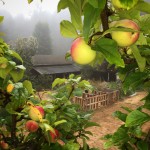
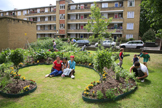
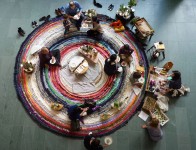

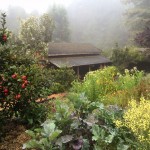
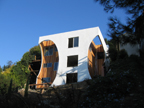
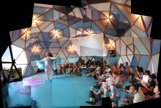
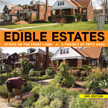
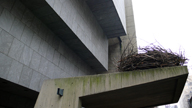
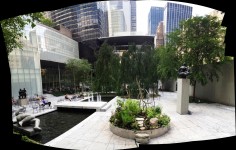
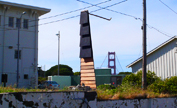
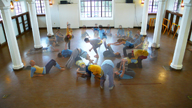
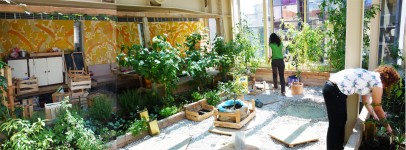
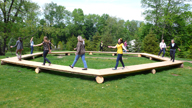
119 thoughts on - INFO & BIO
-
-
-
-
-
-
-
-
-
-
-
-
-
-
-
-
-
-
-
-
-
-
-
-
-
-
-
-
-
-
-
-
-
-
-
-
-
-
-
-
-
-
-
-
-
-
-
-
-
-
-
-
-
-
1 2 3 Next »Hi Fritz,
I am a third-grade teacher at City and Country School in New York, and a former employee of the Whitney Museum. Our students are studying animals that are native to the area, and we too have used the Manhatta Project as a great resource. I showed them the video of you and your Animal Estates 1.0 from the 2008 Whitney Biennial, and they are so enamored and inspired by you and your project. That said, we are looking to build an animal home somewhere around the school, and I would love your input on it. If you have any advice we would greatly appreciate it. Thank you for your time! My best, Berry
Dear Sir / Madam…,
I am Beatrice Agulli and am finishing the Master course in architecture at the Politecnico di Torino. During the Master, I have been researching on projects related to the cultures of urban landscape in Europe and USA. In particular, I am focussing on some of the major changes the culture of landscape design had in the last decade. A decade marked by an economic, institutional and political crisis that have had significant implications for professional activities, the design of urban spaces and the research in urban architecture. Indeed, landscape architecture, after a period of significant innovation that extended until the beginning of this century, has lately entered a phase of dormancy.
With this letter, I would like to ask you three questions on the topics I am researching in order to know your valuable opinion. I will be grateful for any comments you may have.
Thank you in advance for your attention.
Best regards,
BA
1. How did the economic situation of the last decade affect the work of urban landscape designers? Is it possible to measure a decrease in the production of urban spaces, at least in Europe and USA?
2. How did the crisis influence the theoretical research on urban design?
3. Great attention has been paid to the themes developed during last years. I refer, for example, to the popularity of the issue of landscape ecology (e.g. the one codified by the Landscape Urbanism), to the attention to food farming (e.g. vegetable gardens and crops in urban areas) and to the recurring praise of the wild (e.g. forests and Third Landscapes). In your opinion, which issues are mostly developed today and which ones will strongly mark the coming years?
Hi Fritz,
I saw your presentation at Montalvo Arts Center in 2012 and was fascinated by your Edible Estates project. I currently work at a children’s museum in Sausaltio and I would love to talk to you regarding our upcoming “Gardens to Garbage Trucks” festival. Send me an email if you would willing to share your time or any thoughts.
Thanks so much!
Mailing listen signup doesnt seem to be working. Please add me jared@topsydesign.com Thanks!
Hi Mr. Haeg,
My name is Becky Yim and I am a freshman at the University of Southern California. I am currently taking a Music and Performance Arts course, and stumbled upon your work. I was hoping to get in touch with you just to ask a few questions, like where you gain your inspiration from?
Thank you so much!!
Best,
Becky
Hi Fritz,
We moved into the neighborhood on sundown drive back in july and are so inspired by what you’ve created. We just discovered the dome. The energy and spirit of the gatherings throughout the years looks wonderful and we wish we had known about you years ago.
I’m a production designer / architect / artist and suzan is a writer. We wanted to see if you have any salon gatherings coming up? Also is there a good time to just swing by and say hello?
We feel the energy up here on sundown drive and it brings a smile to us just knowing how the dome has contributed throughout the years.
We look forward to hearing from you,
Adam and Suzan
310-874-4123 c
Hi Fritz! I’m a location scout hoping to speak with you about filming at the dome in Eagle Rock. Please contact me at your earliest convenience to discuss.
Hi Fritz,
Here’s where you can find me…
Cheers,
Tom
Hi! Does anyone have any email contact information for Fritz Haeg? Thanks! Camilla
Hi Fritz, I contacted you with an interview request via Airbnb — let me know when you have 10-15 minutes to chat. Looking forward to speaking with you.
Fritz,
Sorry about the difficulty getting in touch! Hope we can connect soon. chriswilcha@me.com
Chris
Hi Fritz,
I’m very interest in renting out your space for a photo shoot. Could you please contact in regards to rates and availability?
Best,
Shelby
Hi Fritz,
Thanks for your reply on AirBnB; this is my email. I can’t afford to book the dome, but I’d love access on one of those dates in July. Just an hour or so would be fine for photographs.
Look forward to hearing from you,
Dean
Hi Fritz,
I previously contacted you on AirBnb about possibly renting the dome space for a photo shoot. Any rate information you could send would be greatly appreciated.
Warm regards,
Emily
Hey Fritz,
I messaged you on Airbnb. Looking forward to connect.
Thanks again!
– Gary
Hello Fritz,
A warm hello from Minnesota! I am a student of Richard Bresnahan at the College of Saint Benedict and Saint John’s University. He was telling me about your work and specifically Salmon Creek Farm. I am very intrigued by your plan for the next chapter for the land. I am an Environmental Studies major and very interested in combined environmental studies and art.Right now, I am looking into architecture. I would love to hear more about Salmon Creek and to see if there is a way I can get involved with Salmon Creek Farm!
I am looking forward to hearing back from you!
-Erin
Hey Fritz,
We have met a few years ago in Auburn. I just coincidentally bumped into your website here because a friend of mine wanted me to show your gardens 🙂 I is a small world. I just wanted to say hello and all the best with your work, I admire all of it!
Martijn
Many thanks Martijn!
Hi Fritz!
We are a team of architects. We just won a competition for MoMA’s Young Architect’s Program to be exhibited this summer. WE WOULD LOVE TO TALK TO YOU ABOUT IT AND COLLABORATE WITH YOU!!
Please reach back if you can.
Best,
Jocelyn Froimovich
Hi, Fritz I am looking for a training course in natural building, carpentry, and or appropriate technology ideally in Los Angeles. In April I will be moving to LA ahead of joining the Interdisciplinary Studio MFA program at UCLA in the Fall. Part of my research there will be to consider how else the built environment, specifically domestic shelters and sites of production, can be constructed in order to build resilience. Considering the research that you’re involved in, I thought that perhaps it would know of training courses, teachers or communities, in Los Angeles involved in similar work. Any leads are greatly appreciated.
Many thanks.
todd
Hi Todd,
I read your post and share some interests with you in my own practice. I am an artist and builder, who is transforming an undeveloped hillside just outside of downtown into a small commune, site of production, experimental building zone. If you arrive and want to chat let me know!
Best,
James
Hi Fritz,
I hope everything is going well with your Salmon Creek Farm project. I just wanted to check in with you to see what your current plans are for the space and to let you know that I am still interested in visiting and/or helping out with the project.
Anyway, I’d love to know how things are going up there. Best of luck to you!
Best wishes,
Cathy Akers
Dear Fritz,
Is there a way to volunteer at Salmon Creek Farm? I am an artist, carpenter and fabricator and I would love to help out on the revitalization. Please let me know if you are taking on volunteer help.
Best,
Don
Dear Fritz,
I am a curator at the Bronx River Art Center, NY and I have planned a 2 years art programs about “Food Systems, Surroundings & Sensibilities”. I would like to invite you to participate in the June 2016 show “Edible Landscape” where your “Edible Estates” would be a great fit. Please let me know if you are interested.
Looking forward,
Karine Duteil
Dear Fritz,
I am a friend of Tadd Malarkey. I live in Little River…am a zen monk…for years ran a zen center here…am a poet…on and on.
I am writing because I want to invite you for dinner and to participate in a discussion group I am putting together…local folks…some of note…some not…actually all of note…different ages…will be fun and interesting…love to have you join us.
It will be a dinner at my place. If you e-mail me with your regular e-mail address I can fill you in on times and topics…right now I am thinking of discussing Karl Ove Knausgaard’s keynote speech to PEN after the Charlie Hebdo attack…still other topics are up.
Congratulation on the Salmon Creek Property and great tremendous good fortune with its development.
All the best to you,
One of your new neighbors and friends…
Ann Kyle Brown
Hi
How does one contact you in regards to your location
Kulaba
Hello Fritz,
I was referred to this page by a friend and really enjoy the content – especially the Animal Estates… I find your work absolutely amazing!
Muriel
Hi Fritz!
I saw the short piece in National Geographic related to their ongoing Food theme, referencing your Edible Estate work. I am a small homeowner in Appleton, WI who is working with our Master Gardener group and the City of Appleton, on a prototype transition of my corner property into the very thing your work seems to represent: taking care of the earth, growing things that have real-food value and doing so with a design that is beautiful and invites community interaction, relationship and participation.
The city is looking at this small project as a prototype for it’s neighboring initiative, whereby neighbors would engage with each other for the betterment of all its residents. Their future funding of the Neighborhood Academy (just completed its first year) may be dependent on whether we are successful with this project.
Would you be willing to provide me with some guidance? Any of us can throw together a bunch of edibles and replace grass, but what this is about is to do so in a manner that invites people to stop, come, talk and build supportive relationships in an environment of purposeful beauty that encourages perpetuation of the same values. I am at a loss as to a design plan that I can put into place with other Master Gardener assistance and low budget.
What might your desire and availability be?
Thanks for considering, Jim
Hi Fritz,
I am an engineer living in San Diego. I am interested in edible landscape. I have your book
“Edible Estate”. I am working on a book about gardening. I like to send you a copy. If you have
no time to write back, that is okay. I love to hear your comments. I want to find a publisher to get the book in print. I do a lot of gardening. It is mostly the kind that you talk about in your book and website.
Please send me your US Postal address !
Regards,
William
Hi Fritz,
I hope you are well. I wanted to ask permission to use a photo off of your site: one you took at the main house of Mildred’s Lane. I’m writing about the group for a music journal. Would you be okay with that?
Otherwise, I’m working with the walker this summer and have been reading up on all of your work: the documentation is really beautiful and well done. Congrats!
Hope to talk soon.
Best,
Chris
[…] + The program is organized and administered independently by Fritz Haeg with later help from the group. + We have lunch visits by 30 to 40 artists, experts, heroes and […]
It’s a pity you were in Sydney for so long yet we never heard about it. If you are back again give us a call, we’ll meet up for a coffee. Glad you enjoyed the Yeomans Project show, it was a pity that it took the Art Gallery of NSW 40 years to put it on after its original scheduling in the mid 70s.
Hi Fritz!
I am a student of Interior Design from Vancouver, BC, Canada. My fellow aspiring designers and myself would like to know:
What is your Design Philosophy?
What is the ‘Big Why’ behind all your inspiring work?
I believe you are busy with a lot of exciting projects but I’m still hoping you can give us your answer.
Thank you!
Althea
Loved your interview on the splendid table! Your work is incredibly inspiring. I have a backyard garden and just this year I decided to plant a couple plants in 2 large beds that are empty in my front yard. It’s exciting to see this type of gardening really taking off in Denver. I hope you can do one of your projects in Colorado!
Thanks for all you are doing!
Hi Fritz,
I enjoyed meeting you yesterday and working on the rug. Thank you for talking with me about suggested readings for my St. Olaf students this fall. My students are excited to serve as rug hosts in October.
The St. Olaf Art Department would love to have you visit sometime as a guest artist and talk with our students and faculty about your work. Would you have time to visit us in Northfield this fall?
I admire your work. Thanks for sharing it at the Walker. Sincerely, Michon Weeks
In 2001, J. R. Riley worked for us as a handyman. He suggested that we put a garden (both vegetables and flowers) in our front yard. I had also visit Villandry int the French Loire Valley district and been inspired by the formal gardens at the chateau, made from vegetables. In 2009, we hired Selfscapes (see website above) and I told Libby Tate, our landscaping project manager, that we wanted a garden in the front of our house. She helped us to design it and managed the creation of the landscape to support it. I retired at the end of 2008 and have been the sole gardener for it.
My father was a gardener and my grandfather and three of my great-grandfathers were very successful farmers; however, I am a self-taught gardener and still have a lot to learn.
The landscaping has been advertised in the western Twin Cities metro-area magazine, Spaces (Selfscapes and Boulder Images ads). It is also included in the Selfscapes website (although they show the front steps that they and Boulder Images and Dakota Fencing created and the dry creekbed/raingarden that Selfscapes created).
My address is 12819 Forest Meadow Drive, Minnetonka, MN.
I was inspired to contact you by the StarTribune (Minnesota) June 12, 2013 article, “The Plot Thickens”.
How would I become a volunteer on the Walker Art Project?
My son and I would be very interested in helping out on this.
Deborah Holdgrafer
[…] is the instructor. He is my hero – eloquent and thoughtful and interested. Alice Waters and Fritz Haeg lectured this evening. It was very much worth my while. Fritz, in particular, was really […]
Hey Fritz
Ran across your trail when I was randomly browsing.
Pleased to see you are interestingly busy and fully engaged…could it be otherwise.
I now live on the south island (8 years) of New Zealand (Aotearoa) with my seven year old son Enzo.
Am now and again in touch with the Pier Djerejian and her sis.
Be well young fellow.
Roger B
Hello Fritz,
My name is Jade Gutierrez, and I am a student at CU Boulder who attended your lecture on the 23rd of October. I only wanted to tell you that I was so deeply moved by your lecture. This year I was in a slump and was unsure of whether or not I should continue the path of an artist, but after your speech I have regained the drive to continue on my path. I was particularly affected by the intimacy of your public works projects. The way that your pieces never stop growing and evolving is so beautiful, and I only hope that one day I can do the same. Thank you so much for impacting my life.
-Jade Gutierez
Hello Fritz,
This is Leif, I interviewed you at CU this month. I just wanted to thank you for giving me the courage to take this work seriously. It feels amazing to realize that we are the ones in charge of deciding what matters and what is valuable as an arising culture of free thinkers…and it’s strange like I needed permission to care about something but your presence absolutely gave me that. Its all coming out… I’ve written 13 pages already tonight. You were very inspiring for all of us and thank you very much. If you ever need any help with a project I would be wholeheartedly invested.
Leif Newberg.
[…] Fritz Haeg, who studied architecture in Italy and received his degree from Carnegie Mellon University, has produced a number of unusual landscape art and architectural projects over a relatively short period of time. His book, Edible Estates: Attack on the Front Lawn, is in its second edition. With “eating local” gaining in popularity through farmer’s markets, kitchen gardens are making a comeback. Kitchen gardens existed in France (“potagers”) and England before the colonists brought them to America. Strawberry Banke Museum in Portsmouth, New Hampshire demonstrates some of the ornamental designs of early kitchen gardens where herbs were planted in patterns. Many herbs, like roses and lavender, obviously have an aesthetic function. In World War II, Americans, facing hard times, turned to “Victory gardens.” Now, some families are becoming more interested in eating organic vegetables and are growing them right in their own front or back yards. Front yard gardens, when well maintained, can greatly enhance the look of the whole community. A properly planted garden can require less maintenance than a lawn. […]
Hello Fritz,
My name is Katelyn. I am a student at MSU, and was able to make it to your lecture this past week. I was very interested in your snag design concept. I am both a studio art major and an animal behavior and neurobiology major so I work both in art and conservation. I am currently an intern at the Howell Nature Center (http://howellnaturecenter.org/)and have the opportunity to build a few animal enrichment pieces for the park. When you presented Animal Estates I was very interested in possibly implementing one of your pieces for an educational work at the park. We are a non-profit and educational facility open to the public with a rehabilitation and conservation message. I would love to work with you or at least be in contact about something we could do ourselves as I noticed you are quite busy, possibly building our own snag tower?!?
Thank you, hope to hear back soon, (lewisk27@msu.edu)
Kate L.
[…] a temporary dome at the park with artist, landscaper and designer of ‘edible gardens’ Fritz Haeg and others on Sunday 16 […]
[…] a temporary dome at the park with artist, landscaper and designer of ‘edible gardens’ Fritz Haeg and others on Sunday 16 […]
Mr. Haeg – I live in a small mobile home, but do have a front yard and two 4′ x 10′ wood raised beds ib my backyard. I live in Naples, FL and have no idea how to start ripping out my front lawn. Do ever have ideas for Florida vegetable gardening? Perhaps my yard cou;d feed a good portion of the park where I live. My only income is a monthly disability check, so I have very little cash, therefore I need inexpensive ideas how to enrich my sandy soil. I would appreciate any and all suggestions.
Hello Fritz. I’m from Quebec in Canada (near Montreal. I was inspired by your projects to build my vegetable in the front yard. I wanted to thank you for your contribution to this type of projects. Your work gives me the courage to do so.
Now, after they realise that I built my garden, city wants to change the rules and ban it from now. I will try to make them change their minds and educate them. I’ll take my inspiration and informations from your book and your project … and mine too obviously
http://translate.google.ca/translate?sl=fr&tl=en&js=n&prev=_t&hl=fr&ie=UTF-8&layout=2&eotf=1&u=http%3A%2F%2Fwww.lepotagerurbain.com%2F
Thank you .
Michel.
I posted about your garden here – best of luck!
Hi fritz iIm yogan a french carpenter. I make a travel along the west coast of America. I want to meet and help people in the construction. Im a friend of lloyd kahn of shelter edition book. I want to know if i can visit and help you during few days in exchange of food and a place for sleep? I can do many things with the wood. See my website http://www.yogancharpentier.com
In one week
Thanks
I am writing a story on front yard vegetable gardens for Mother Nature Network. How would you describe the difference between a front yard vegetable garden and an edible landscape?
Hi Fritz! I’m Massimiliano Maroncelli, I work for Circolo di Cultura Omosessuale Mario Mieli in Rome, Europride 2011 organizer. We saw your pics of Circo Massimo http://www.fritzhaeg.com/wikidiary/2011/06/11/on-june-11th-2011-lady-gaga-at-europride/2011-06-11-p1220392/ and we like so much. We would ask you if we can use your pic (over 150 dpi if it’s possible) for a poster to sponsor an initiative about 40 years old of Glbt italian Moviment. If you are agree or for any question please contact me
Thank you for your attention
Massimiliano
[…] For more details about Fritz Haeg, check out his website. […]
Hi Fritz! I met you a year and a half ago at a lecture you held at Auburn University. I graduated in 2010 in architecture at Southern Polytechnic State University and am now working for a firm in Augusta, GA. Augusta has a community by the name of HARRISBURG. It is in crucial need of revitalizing. A few years ago, Augusta received one of their first community gardens located in Harrisburg and this Thursday there will be a design Charrette with the Mayor, Commissioner, local Augustans, and people from the Atlanta Regional Commission to help begin the revitalization process. I truly feel that your work with edible estates would be very successful in this neighborhood. I am aware that we are a small town located in Georgia, but with your help, I believe it will make a difference. I am not sure how the process works, but Augusta would be honored for you to come and plant your seed! Thank you for your time and I look forward to hearing from you.
Fritz have you heard about the Michigan couple who built a garden in their front yard and are now having to go to court because the city wants them to destroy it?
http://www.rawstory.com/rawreplay/2011/07/michigan-woman-faces-jail-time-for-planting-vegetable-garden/
http://www.viciousbabushka.com/2011/07/michigan-woman-arrested-for-vegetable-garden-and-no-pot-plants.html